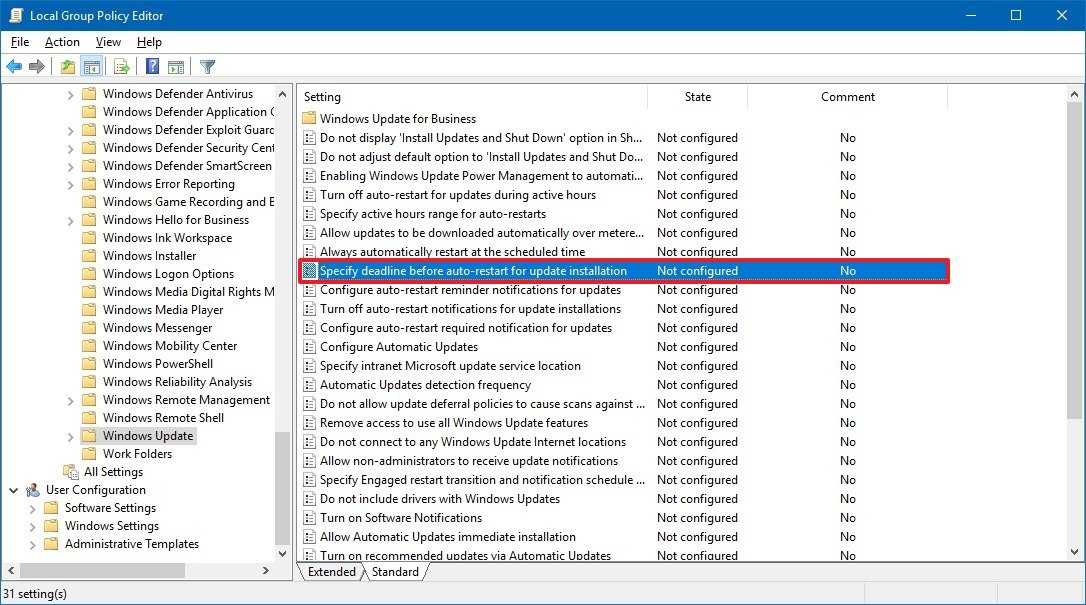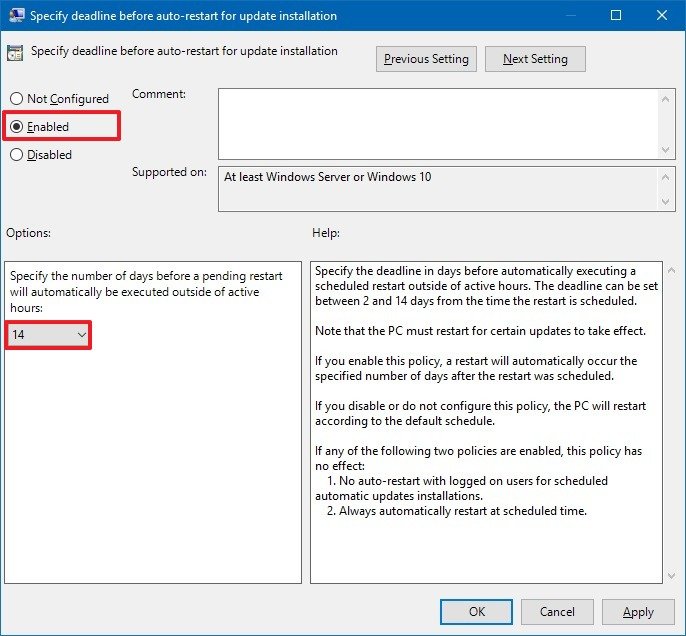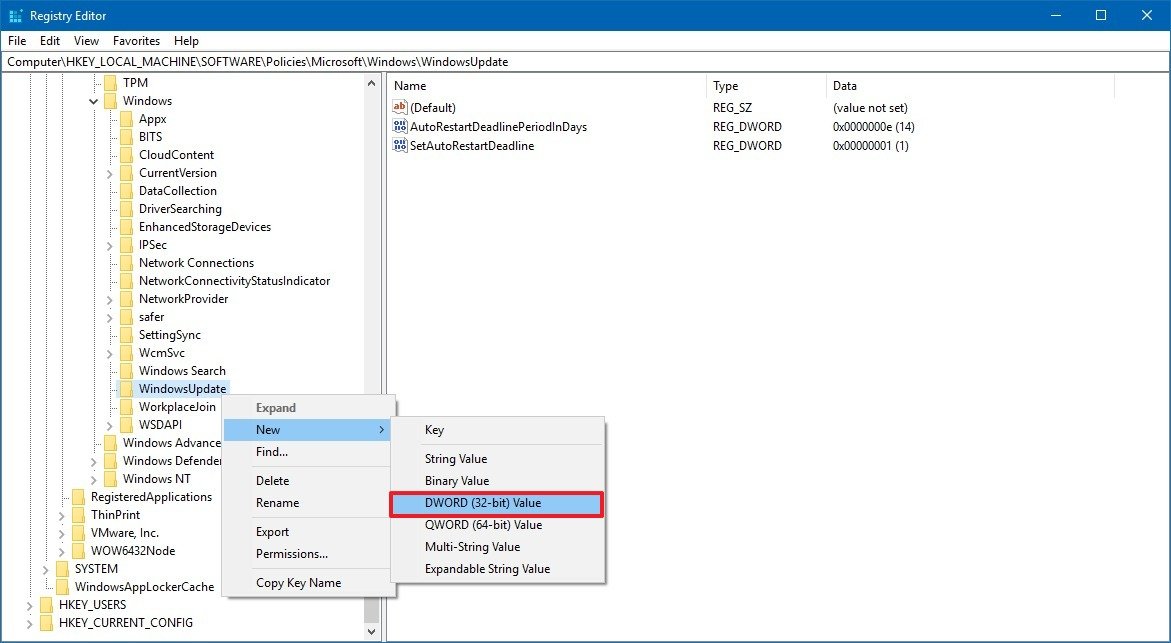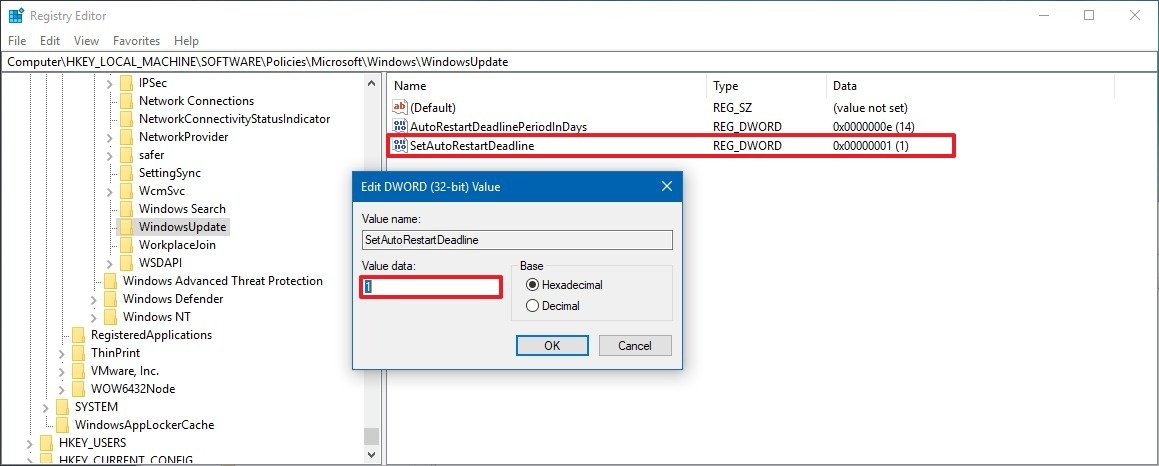How to change the default auto-restart deadline for updates on Windows 10
If you're constantly rescheduling a restart to apply updates, use this guide to specify a new default schedule to automatically reboot your PC on Windows 10.
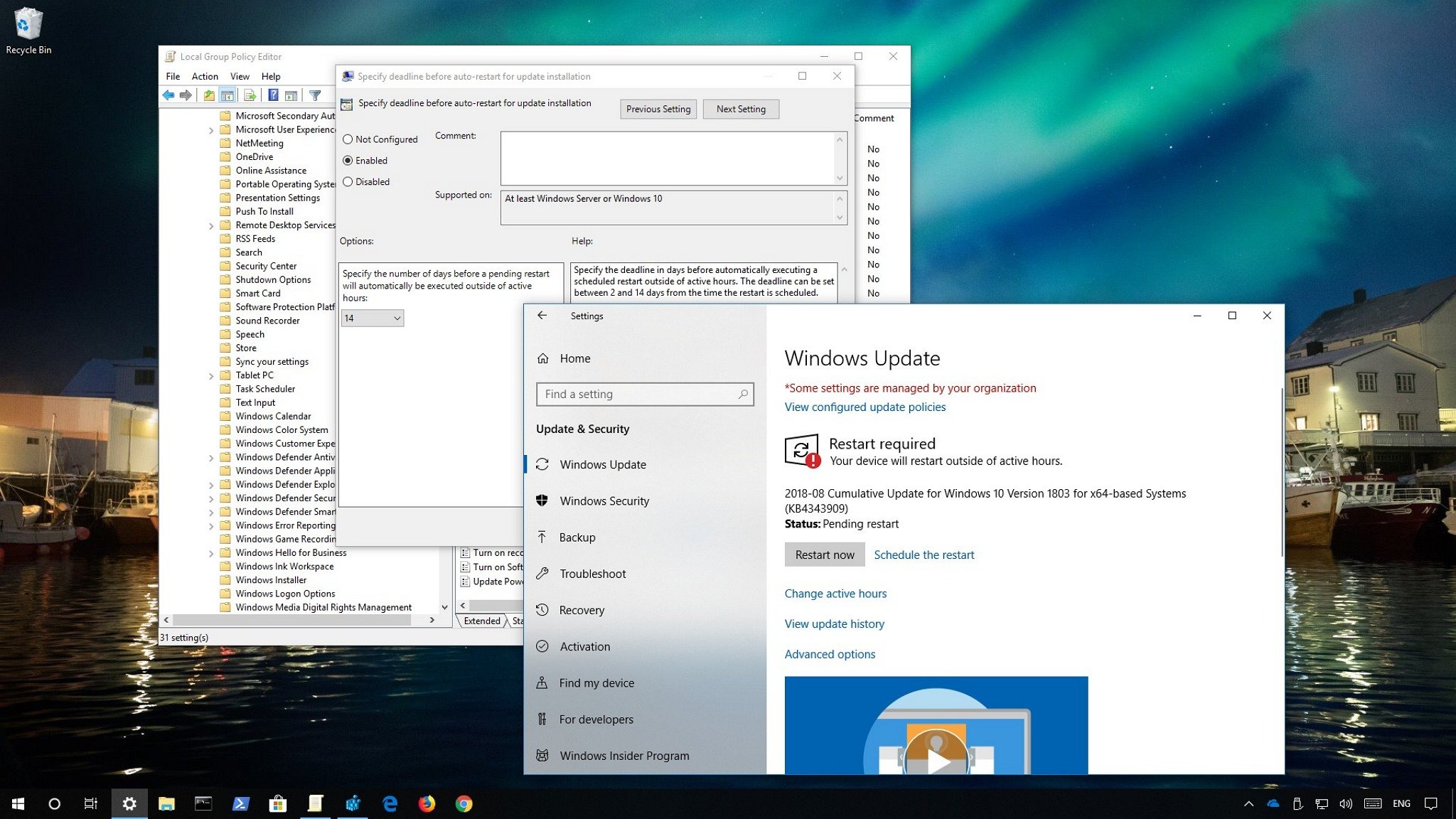
On Windows 10, when a new update installs, you get a notification letting you know that your device will restart automatically outside of your "active hours" to apply the new changes, and as needed, you can always reschedule a restart using the Windows Update settings.
The only caveat is that you can only postpone a restart for up to seven days, and it's a manual process that you have to do every time a new update becomes available. However, if you find yourself rescheduling a deadline on every update, it's possible to configure a policy in Group Policy or modify the Registry to specify a new default deadline (up to 14 days) that Windows 10 will use to restart your device automatically.
In this Windows 10 guide, we'll walk you through the steps to change the default schedule that your computer uses to restart automatically to apply system updates.
- How to specify auto-restart deadline for updates using Group Policy
- How to specify auto-restart deadline for updates using Registry
How to specify auto-restart deadline for updates using Group Policy
If you want to specify a new default schedule to restart your device to apply new updates automatically, you can use the Local Group Policy Editor following these steps:
- Use the Windows key + R keyboard shortcut to open the Run command.
- Type gpedit.msc and click OK to open the Local Group Policy Editor.
- Browse the following path:
Computer Configuration > Administrative Templates > Windows Update - On the right side, double-click the Specify deadline before auto-restart for update installation policy.
- Select the Enabled option.
- Under "Options," use the drop-down menu to specify the number of days to wait before your computer restart automatically to finish installing updates.Info: Although you can select up to 30 days, according to the policy details, you can use any number between 2 and 14. Also, you have to make sure that the "No auto-restart with logged on users for scheduled automatic updates installations" and "Always automatically restart at scheduled time" policies are not enabled. Otherwise, this policy to re-schedule auto-restart won't work.
- Click Apply.
- Click OK.
After completing the steps, your computer will reboot automatically outside your active hours on the schedule you specified outside your active hours.
In the case you change your mind, you can revert the changes using the same instructions, but on step No. 5, select the Not Configured option.
How to specify auto-restart deadline for updates using Registry
In the case that you're running Windows 10 Home, you won't have access to the Local Group Policy Editor, but you can still change the default restart schedule to restart your device to finish installing updates using the Registry.
All the latest news, reviews, and guides for Windows and Xbox diehards.
Warning: This is a friendly reminder that editing the Registry is risky, and it can cause irreversible damage to your installation if you don't do it correctly. It's recommended to make a full backup of your PC before proceeding.
To adjust the restart settings for updates, use these steps:
- Use the Windows key + R keyboard shortcut to open the Run command.
- Type regedit, and click OK to open the Registry.
- Browse the following path:
HKEY_LOCAL_MACHINE\SOFTWARE\Policies\Microsoft\WindowsQuick Tip: On Windows 10, you can now copy and paste the path in the Registry's address bar to quickly jump to the key destination. - Right-click the Windows (folder) key, select New, and click on Key.
- Name the key WindowsUpdate and press Enter.
- Right-click the WindowsUpdate (folder) key, select New, and click on DWORD (32-bit) Value.
- Name the key SetAutoRestartDeadline and press Enter.
- Double-click the newly created DWORD and set the value from 0 to 1.
- Click OK.
- Right-click the WindowsUpdate key, select New, and click on DWORD (32-bit) Value.
- Name the key AutoRestartDeadlinePeriodInDays and press Enter.
- Double-click the newly created DWORD, and under "Base," select Decimal.
- Set the value from 0 to 14.
- Click OK.
After completing the steps, when a new update is available, your device will restart outside the active hours in the day you specified.
If you want to go back to the previous settings, you can use the same instructions, but on step No. 5, make sure to right-click the WindowsUpdate (folder) key and select the Delete option. If the WindowsUpdate key was previously available, instead of deleting it, it's recommended to right-click and delete the SetAutoRestartDeadline and AutoRestartDeadlinePeriodInDays keys.
While these instructions will set a new default restart deadline schedule, it's still possible to manually override a reboot for a particular update on Settings > Update & Security > Windows Update, and clicking the Schedule a restart link.
More Windows 10 resources
For more helpful articles, coverage, and answers to common questions about Windows 10, visit the following resources:
- Windows 10 on Windows Central – All you need to know
- Windows 10 help, tips, and tricks
- Windows 10 forums on Windows Central

Mauro Huculak has been a Windows How-To Expert contributor for WindowsCentral.com for nearly a decade and has over 22 years of combined experience in IT and technical writing. He holds various professional certifications from Microsoft, Cisco, VMware, and CompTIA and has been recognized as a Microsoft MVP for many years.
